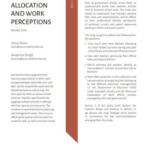
Can we afford to overlook homes in learning outcomes?
9 June 2018
As part of an internship at the Accountability Initiative, I had the opportunity to assist and administer surveys in a research project which aims to study how teachers use their time during work hours in government schools across Delhi. My first experience on field taught me that it is not only the school and teachers which play an important part in a student’s life; what happens at home is equally critical. It led me to the following question – why is the home yet to be given adequate attention in policy research and decision making when it comes to learning?
Almost a year ago, the Right to Education Act (RTE) 2009 was amended to include learning outcomes. Simply put, learning outcomes indicate what a child should, ideally, have learnt by the time he or she moves from a grade to a higher one – or what the outcome of the year’s education should have been. These outcomes are to be measured using class-wise and subject-wise lists prepared by the teachers, and assessed by a revised method of evaluation. They are a leap from a system which has primarily focussed on increasing access to schools thus far.
The RTE Act was a landmark law and reinforced the importance of free and compulsory education for children between 6 to 14 years of age. What followed was empirical research analysing the importance of a sound system of public service delivery and this has been the focus ever since. Different aspects of the system such as teacher quality, access to technology and better evaluation systems have been discussed in the policy arena and the government has acted on them as well. Changes made to policies such as the No Detention Policy (NDP) and the Continuous Comprehensive Evaluation (CCE) have showed us how the government is constantly building on the institutional system of public education.
However, can policy research and decision making still afford to overlook the background of students and what they experience at homes?
In the course of interviews I was part of, I noticed caveats to the usual narrative. The most important one being the household environment. Household environment here refers to any happenings inside the home. Even as this is one among different factors which affect learning outcomes of children from economically weaker sections of society, teachers had a lot to say on this. When asked about difficulties teachers faced inside a classroom,they most often stated that the children grasped and retained only a part of what was being taught in class. In addition, as per them, this happens because the children are many times first generation learners, as a consequence of which they do not receive any assistance from the family in revising concepts taught in school.
Parents may also consider education to be a distant priority, if at all. The experience of households made unstable by alcoholism or abuse, they said, led to immediate consequences such as loss of core capacities to learn and interest in studies.
Evidently, consideration of a child’s psycho-social needs when designing or improving a system which tends to their needs is key to the debate on learning.
Learning outcomes should not only be measured as a consequence of facilities provided at the school but should also look at the household environment a student comes from. Otherwise, it seems incorrect and illogical to expect children to learn purely based on increasing teacher quality and access to resources.





